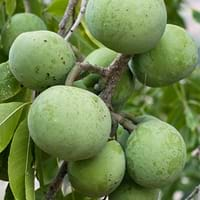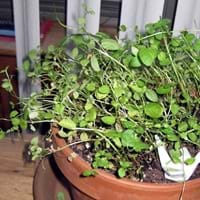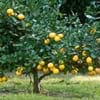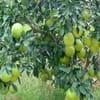Life Span
Perennial
Annual and Perennial
Type
Fruit
Herbaceous Perennial, Herbs
Origin
Mexico, Central America
Europe, Middle East
Types
Reinikie, Dade, Pike, Suebelle and Golden
Climate
Mentha × piperita 'Candymint', Mentha × piperita 'Citrata', Mentha × piperita 'Crispa'
Number of Varieties
Not Available
Habitat
Tropical Highlands
Wide range of ecological site
USDA Hardiness Zone
8-11
3-7
AHS Heat Zone
11-6
Not Available
Sunset Zone
H1, H2, 14, 15, 16, 17, 18, 19, 20, 21, 22, 23, 24
Not Available
Habit
Oval or Rounded
Clump-Forming
Flower Color
Light Green, Ivory
Purple
Flower Color Modifier
Bicolor
Bicolor
Fruit Color
Light Yellow, Yellow green, Light Green
Non Fruiting Plant
Leaf Color in Spring
Green, Dark Green
Dark Green
Leaf Color in Summer
Green, Dark Green
Green, Dark Green
Leaf Color in Fall
Green, Dark Green
Dark Green, Green
Leaf Color in Winter
Light Green
Light Green
Leaf Shape
Alternate
Ovate elongated
Plant Season
Spring, Summer, Fall, Winter
Spring, Summer
Sunlight
Full Sun
Full Sun, Partial Sun
Type of Soil
Loam, Sand
Loam
The pH of Soil
Acidic, Neutral
Neutral, Slightly Acidic, Slightly Alkaline
Soil Drainage
Well drained
Well drained
Bloom Time
Winter, Late Winter
Late Summer, Mid Summer
Tolerances
Drought
Drought
Where to Plant?
Ground
Container, Ground
How to Plant?
Budding, Grafting, Seedlings, Vegetative
From Rhizomes, Vegetative Reproduction
Plant Maintenance
Medium
Low
Watering Requirements
Do not water frequently, Needs more water during establishment, Water during dry weather
Requires plenty of water during the growing season
In Summer
Lots of watering
Lots of watering
In Spring
Moderate
Moderate
In Winter
Average Water
Less Watering
Soil pH
Acidic, Neutral
Neutral, Slightly Acidic, Slightly Alkaline
Soil Type
Loam, Sand
Loamy
Soil Drainage Capacity
Well drained
Well drained
Sun Exposure
Full Sun
Partial Sun
Pruning
Remove damaged leaves, Remove dead branches, Remove dead leaves
Remove damaged leaves, Remove dead branches, Remove dead leaves, Requires very little pruning
Fertilizers
All-Purpose Liquid Fertilizer
All-Purpose Liquid Fertilizer
Pests and Diseases
Red blotch
Red blotch
Plant Tolerance
Drought
Drought
Flowers
Insignificant
Yes
Flower Petal Number
Single
Double
Fragrant Flower
Not Available
Yes
Fragrant Bark/Stem
No
Yes
Foliage Texture
Medium
Coarse
Foliage Sheen
Matte
Matte
Allergy
drowsiness
flushing of face, Headache, Heartburn, Sore Throat
Aesthetic Uses
Not Used For Aesthetic Purpose
Not Used For Aesthetic Purpose
Beauty Benefits
Not Available
Maintains teeth healthy
Environmental Uses
Air purification
Prevent Soil Erosion
Medicinal Uses
Anti-carcinogenic effects, Colon Cancer
Mouth Sores, Pain killer, Vitamin A
Part of Plant Used
Fruits, Pulp, Seeds
Flowers, Leaves
Other Uses
Used As Food
In toothpaste, Mouth freshner, Used in flavouring curries, teas, used in Indian cuisine in curries
Used As Indoor Plant
No
Yes
Used As Outdoor Plant
Yes
Yes
Garden Design
Edible, Fruit / Fruit Tree, Shade Trees, Tropical
Herb
Botanical Name
CASIMIROA edulis
Mentha × piperita
Common Name
White Sapote
Peppermint
In Hindi
White Sapote
पिपरमिंट
In German
White Sapote
Pfefferminze
In French
Sapote blanche
Menthe poivrée
In Spanish
White Sapote
Mentha × piperita
In Greek
White Sapote
Μέντα
In Portuguese
White Sapote
Hortelã-pimenta
In Polish
White Sapote
Mięta pieprzowa
In Latin
White Sapote
Peppermint
Phylum
Magnoliophyta
Magnoliophyta
Class
Magnoliopsida
Magnoliopsida
Order
Sapindales
Lamiales
Family
Rutaceae
Lamiaceae
Clade
Angiosperms, Eudicots, Rosids
Angiosperms, Asterids, Eudicots
Tribe
Not Available
Mentheae
Subfamily
Not Applicable
Not Available
Importance of White Sapote and Peppermint
Want to have the most appropriate plant for your garden? You might want to know the importance of White Sapote and Peppermint. Basically, these two plants vary in many aspects. Compare White Sapote and Peppermint as they differ in many characteristics such as their life, care, benefits, facts, etc. Every gardener must at least have the slightest clue about the plants he wants to plant in his garden. Compare their benefits, which differ in many ways like facts and uses. The medicinal use of White Sapote is Anti-carcinogenic effects and Colon Cancer whereas of Peppermint is Mouth Sores, Pain killer and Vitamin A. White Sapote has beauty benefits as follows: Not Available while Peppermint has beauty benefits as follows: Not Available.
Compare Facts of White Sapote vs Peppermint
How to choose the best garden plant for your garden depending upon its facts? Here garden plant comparison will help you to solve this query. Compare the facts of White Sapote vs Peppermint and know which one to choose. As garden plants have benefits and other uses, allergy is also a major drawback of plants for some people. Allergic reactions of White Sapote are drowsiness whereas of Peppermint have flushing of face, Headache, Heartburn and Sore Throat respectively. Having a fruit bearing plant in your garden can be a plus point of your garden. White Sapote has showy fruits and Peppermint has no showy fruits. Also White Sapote is not flowering and Peppermint is flowering. You can compare White Sapote and Peppermint facts and facts of other plants too.





